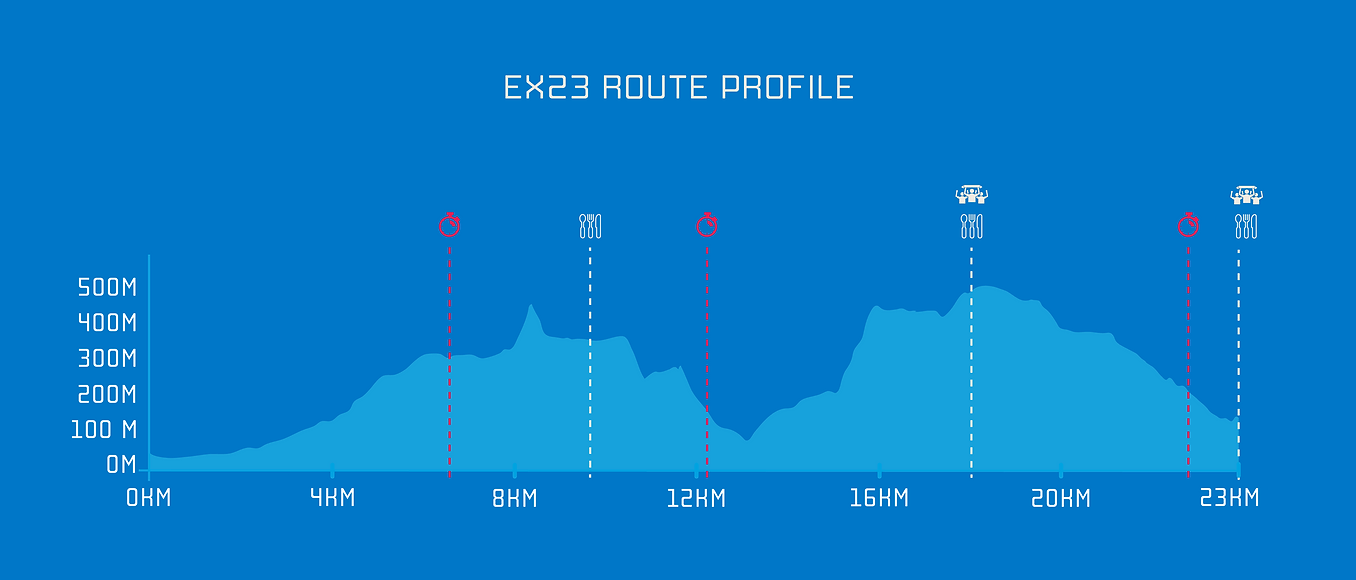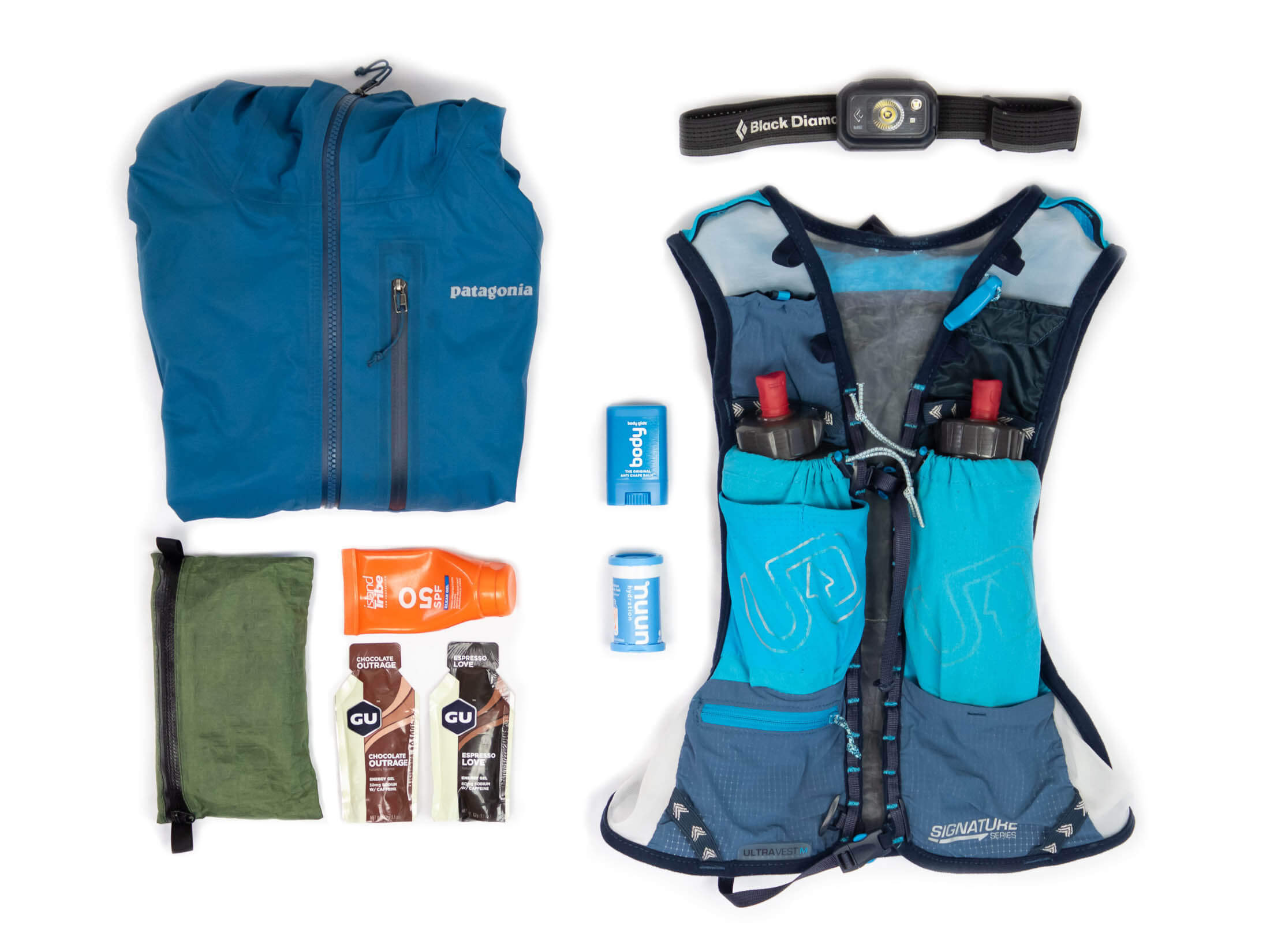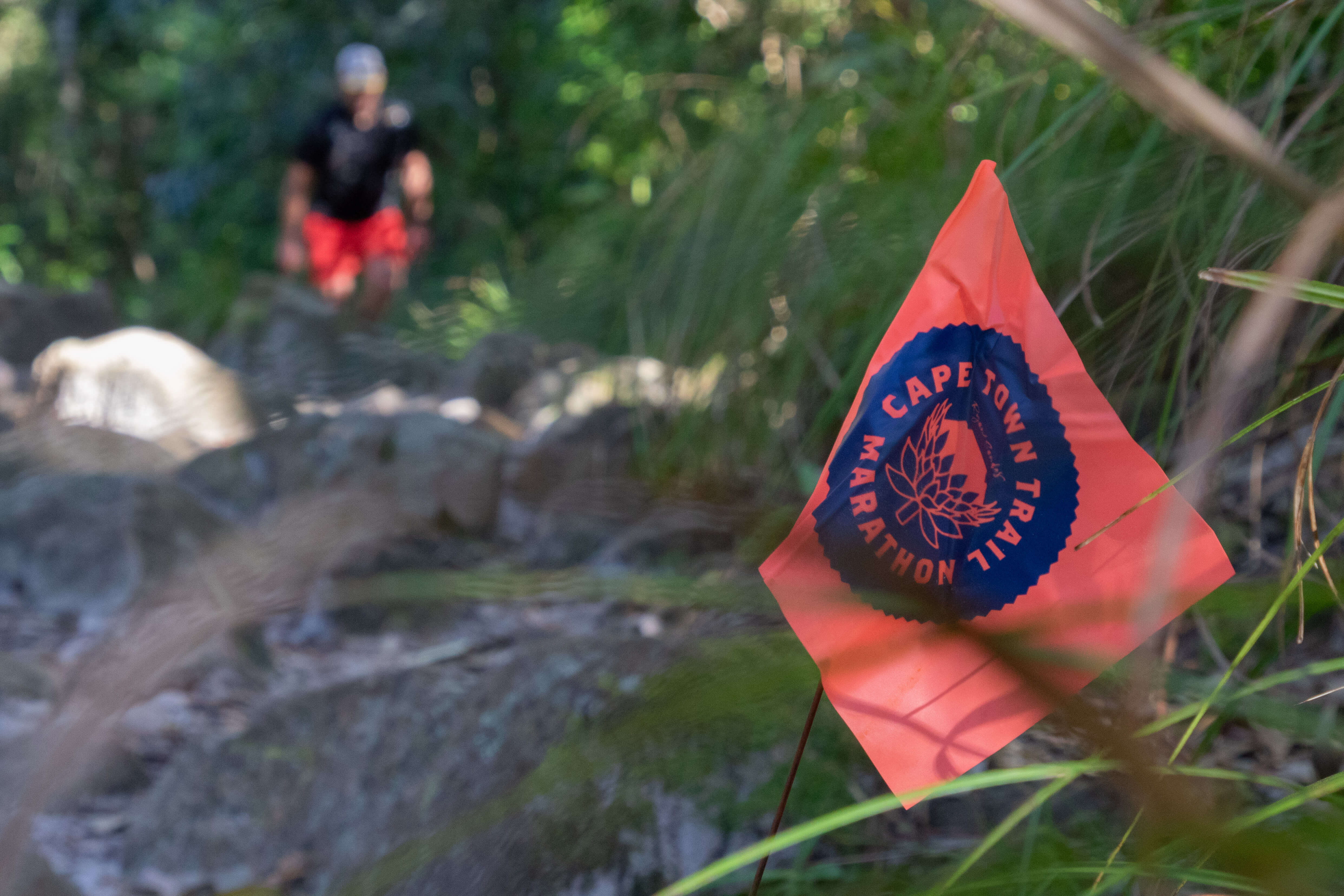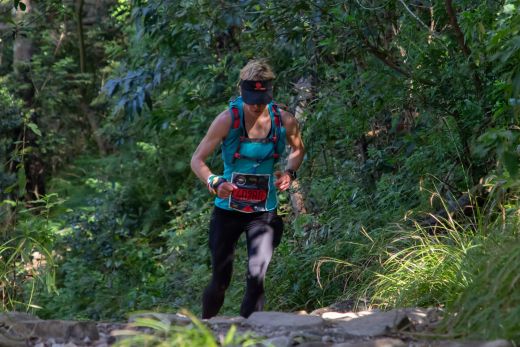So you’ve been running for at least six months, and now you want to run your first trail race. As for the details, you haven’t quite figured those out yet. You haven’t decided on a race and don’t know what you’d need to do to prepare for it. Good thing you’ve found this page, which explains everything you need to know about preparing for and running your first trail race – half-marathon or shorter.
Pick the right event
Picking the right event will ensure that you challenge yourself without taking on too much. This will give you the confidence and experience needed to take on more serious runs.
Challenge yourself without biting off too much
Your first race should challenge you without breaking you. You don’t want to have to crawl to the finish line. That said, choosing a race of the right difficulty is not easy when runs vary in intensity so much, even among those of similar lengths. Not all 10K’s are created equal, and it’s important to consider race profile as well as distance. Look for a run with similar elevation gain and distance to your longest training runs, or maybe choose a race that is longer but has gentler inclines or one that is shorter but more hilly. A quick study of a course’s profile will also tell you where the big climbs are and so give you a better idea of what to expect on the day.
Start local
Choosing a first run close to home makes sense for many reasons: a local run will be at a similar elevation to your training runs, and you’ll have a better idea of what to expect in terms of conditions. A smaller, more low-key race will also have a more relaxed atmosphere – possibly just what you need for your first trail race.

Training
Unless you’re a seasoned runner, you’ll need to do some training, and even then a little focussed training could reap significant benefits. How much training you do will largely depend on your current fitness level and your goals. The greater the difference between the two, the more time you will need to close that gap.
Log the miles
If you’re aiming for a personal longest distance or are new to running, it’s important to log a high number of miles. Speed training can also help make longer runs feel easier, but the mainstay of your training should be distance runs, the longest of which should be almost as long as your race. The terrain should also be similar to that covered in the race. If the route involves significant elevation gain (and most trail runs do), you will also need to incorporate some hill training into your routine. If you are working up to a run significantly longer than what you’re currently capable of (maybe your first half marathon), you’ll need a training progression plan. If you had 14 weeks to extend your maximum distance from 15km to 21km, your plan might look something like this.
| Week | Day 1 | Day 2 | Day 3 |
| 1 | 5 km | 15 km | 8 km |
| 2 | 5 km | 16 km | 8 km |
| 3 | 5 km | 16 km | 8 km |
| 4 | 5 km | 17 km | 8 km |
| 5 | 6 km | 17 km | 9 km |
| 6 | 6 km | 18 km | 9 km |
| 7 | 6 km | 18 km | 9 km |
| 8 | 6 km | 19 km | 9 km |
| 9 | 7 km | 19 km | 10 km |
| 10 | 7 km | 20 km | 10 km |
| 11 | 7 km | 20 km | 10 km |
| 12 | 7 km | 21 km | 10 km |
| 13 | 7 km | 21 km | 10 km |
| 14 | 5 km | 15 km | 8 km |
Seasoned runners can progress faster by increasing the length of Day 2 runs by 2km every week, but newer runners should play it safe and mitigate the risks of overtraining and injury by taking a more prudent approach like that above. Note that the distances of all three runs taper off in the last week. This is intended to give your body a chance to rest and recover properly before the big day. The biggest gains in muscular adaptation often also incur in this last week of active rest.
Practice race pace
When I refer to pace, I’m not talking about speed as much as I’m talking about level of exertion. You want to keep this relatively constant. If you attacked the hills with the same speed you ran the flats, you’d quickly tire yourself out. Run the downhills and flats, but then hike the steeper climbs. On your training runs, try to get a sense of how long you can maintain a certain level of effort, and then try to find the right pace for a run the same length and intensity as your race. A GPS sport watch will be able to show you both pace and heart rate, which will make it easier to gauge exertion level and actual speed.

Focus on technique
Running with good technique can help you avoid injury and allow you to run more efficiently. What does good trail running technique look like? Short, quick strides and a midfoot strike. A short stride will help you maintain balance on uneven terrain and make it easier to vary the length of a single stride when you need to clear awkwardly positioned obstacles. Keeping your stride short will also make it easier to land midfoot and avoid the jarring impact of a heelstrike, an error in form which can cost you energy and put unnecessary strain on your knees.
Incorporate strength training
I’ve already said that the mainstay of your training should be distance runs, but progressing runners can also benefit from some targeted strength training. Trail runners benefit most from single-leg exercises, plyometrics, and anti-rotation core exercises. Perform these on a moderate or hard running day. Performing strength training on a rest day would negate the purpose of your day off – resting. And performing it on easy days would make those days harder. Two sessions of 30 to 40 minutes a week is enough to produce noticeable results. And, while you’re at it, don’t forget to stretch.
Other preparations
To properly prepare for a race, you might also need to study the route and learn what kind of conditions to expect. Such information can help you decide what to wear and what to carry with you, and can inform decisions around rehydration, refueling and race strategy.
Wear appropriate clothing
Your choice in clothing will depend much on the weather. Warm weather calls for light, well ventilated apparel like running shorts and shirt while colder temps might demand an additional base layer or running leggings. If your first race is local (recommended), you’ll probably run in whatever you usually train in. If you want to wear something new, just make sure you run in it before race day. You don’t want to discover any chafe-inducing seams on the day. Lastly, you’ll also need sunglasses and a hat, maybe gloves too if it’s very cold. If you know you could face conditions that range from one extreme to the other, you will need to learn how to layer your clothing in a way that keeps you warm and limits sweatiness. Again it’s best to experiment with these in a range of conditions before race day.
Carry the right kit
Most trail runs of half-marathon length or shorter don’t demand much in the way of additional gear, but more challenging races – those in remote locations or areas susceptible to fickle weather – can put greater demands on runners and their kit. Some organisers make certain kit mandatory. Even in summer, you should pack a light jacket or warm layer on runs that involve significant elevation gain or unpredictable conditions. Besides an extra layer, it’s also a good idea to carry these on longer runs: a blister kit, anti-chafe lube, small stick of sunscreen, and electrolyte tablets. The last item is especially important if it’s going to be hot. Likewise, you’ll also have to carry more water if it’s warm and there are few or no aid stations. All of this – your kit and water will need to go into a vest or pack. 10 to 14 litres will be a good size for most situations.
- Extra layer
- Blister kit
- Anti-chafe lube
- Electrolyte tablets
- Gels or dummies
- Sunscreen

Use worn-in shoes
Running a race in new shoes is a good way to get blisters, especially if you wear a model that you haven’t run in before. Save yourself the pain and run yourself in a pair of shoes that you have tried and tested. If your current shoes don’t have many more miles left in them, it would be a wise move to start phasing in a new pair. By training in a new pair, you’ll prolong the life of your old shoes, improving the chances they’ll still be in a usable state come race day and ensuring that you have a newish but worn-in pair when your old faithfuls finally fall apart. If you’ve only recently heard about minimalist and zero drops shoes and want to know what the fuss is about, see my article on how to transition to minimalist shoes.
Have a rehydration and refueling strategy
Longer races require a rehydration and refueling strategy. After two hours on the go, it becomes increasingly important to top up your blood sugar levels. Fortunately, you won’t face the refueling challenges faced by marathon runners, who have to moderate their sugar intake. On runs up to four hours, you can top up your blood sugar levels with easily digestible candies and gels. Rehydration, on the other hand, can require more forethought. Your liquid requirements will depend on distance, level of exertion, and temperatures. A hard mid-summer race could see you drinking as much as 800 millilitres every hour. You might have to carry a significant amount of that depending on the availability of aid stations and natural water sources. This kind of H2O intake will also require you to replace lost electrolytes with some kind of electrolyte replacement.
Know what to expect
Knowing what to expect from a route can help you plan your race. Learn where the big climbs are and decide on an appropriate plan for tackling these challenges. You don’t want to go hard in the first half of a race if the biggest climbs are in the last half. It’s almost always better to leave a little extra in the tank for the last third of a race. If you find yourself with just a few kilometers to go and plenty left in your legs, you can safely burn the last of your energy then. Most events have a website where you can download a map or race profile.

Race day
When the big day arrives you’ll probably be anxious to get to the starting line. But first, there are a few last minute preparations to ensure that your race goes well.
Apply anti-chafe
Chafing can be a problem whenever you sweat more or run harder than you would during an average training run. To avoid blisters and painful raw spots, apply a little anti-chafe lub (BodyGlide is a popular brand) to vulnerable areas – inner thighs, underneath sports bra clasps, and between toes. Running in the right shorts (with an inner mesh lining) can also help prevent chafe if you wear them without underwear, as you are supposed to. These built-in boxers wick away moisture, which would otherwise increase friction between skin and fabric.
Hydrate before the race
On longer runs and those performed in warmer weather, it’s a good idea to hydrate before your race. But prehydrating doesn’t mean gulping down two litres right before the start. Drinking too much pure water will lower the blood’s sodium levels, forcing the body to expel it in an attempt to maintain the correct equilibrium. Clear urine is a sure sign that you have drunk too much (Pee should be straw coloured) and that your electrolyte levels are too low. To overcome this problem, add an electrolyte supplement to your pre-race drink, and sip this slowly over the few hours before your run.
Stick to the plan and pace yourself
You might be tempted to quicken your pace to keep up with other runners. Don’t do this in the first half of your race. Rather, run conservatively until you’re into the last half or third of the race, and then only push it if you know you have enough left in your legs to make it to the end. One way to avoid the temptation to keep up with others is to place yourself towards the back of the pack at the start. Faster runners tend to line up at the front, and if you do the same, you might find yourself having to push to keep up or be overtaken frequently. It’s often better to start towards the back and then overtake slower runners later if you need to.
Get out there
You now have the best advice I can give someone looking to run their first trail race. The only thing left to do is to get out there and run it. That said, if you want more useful information on trail running and race preparation, please see my many other pages on these topics. Happy running.
